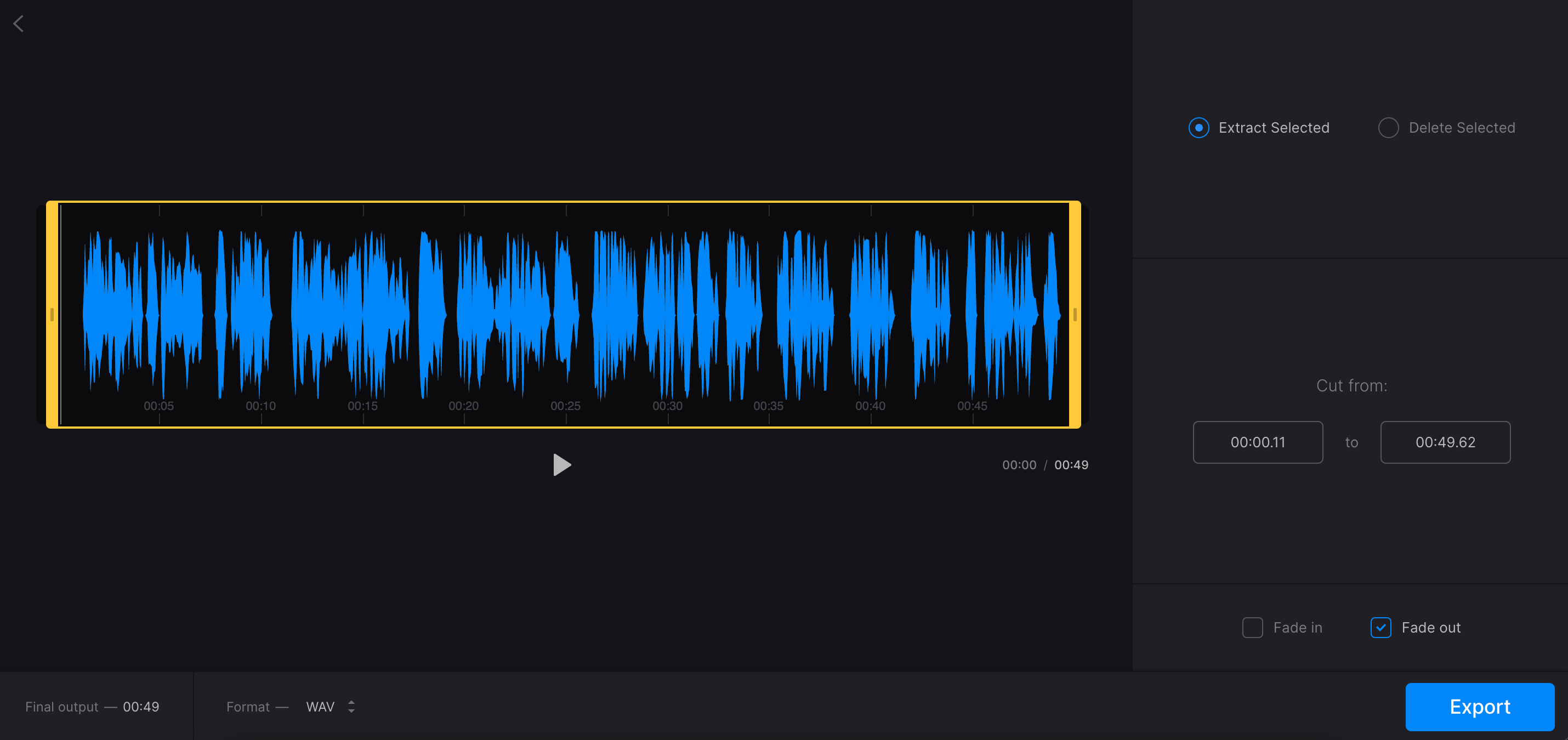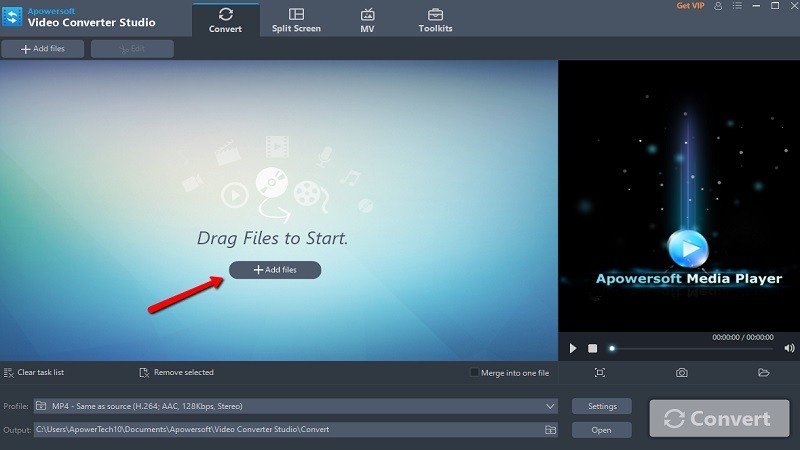There’s a wealth of audio content available on YouTube, and sometimes, you might want to extract that audio for your own projects, whether it’s for a presentation, video, or personal enjoyment. However, diving into this practice comes with its own set of rules and nuances. This article will equip you with the knowledge you need to safely and ethically extract audio from YouTube videos. We'll also discuss copyright laws and fair use to ensure that you stay on the right side of legality while leveraging the rich tapestry of sounds available online.
Understanding Copyright and Fair Use

When it comes to using audio from YouTube, understanding copyright and fair use is crucial. Copyright laws exist to protect the creators' rights, ensuring that they get credit and potential revenue for their work. Here’s a breakdown of what you need to know:
- Copyright Basics: Copyright automatically covers any original work, including videos, music, and sound tracks. This means that the moment someone uploads their content to YouTube, it is protected by copyright.
- What You Can’t Do: If you extract audio from a YouTube video without permission, you could potentially infringe on the copyright, leading to legal repercussions. This includes using the audio in a commercial project or redistributing it without proper licensing.
- Public Domain and Creative Commons: Some YouTube creators use licenses that allow for broader use of their content. Look for videos tagged under Creative Commons or those in the public domain to use without worrying about copyright infringement.
- Fair Use Doctrine: Fair use permits limited use of copyrighted material without permission, usually for commentary, criticism, or educational purposes. Factors to consider include:
- Purpose and character of the use (commercial vs. educational)
- The nature of the copyrighted work
- The amount and substantiality of the portion used
- The effect of the use on the potential market for the original
With these concepts in mind, you can better navigate the world of audio extraction from YouTube while respecting the rights of content creators. This understanding can enable you to make informed decisions that enhance your projects without crossing any legal lines.
Also Read This: How to Update LinkedIn Profile Without Notifying Network
Tools and Software for Audio Extraction

When it comes to extracting audio from YouTube videos, there are several tools and software options available that cater to different needs and preferences. Whether you're looking for a quick online solution or a more robust desktop application, you'll find the right tool for your project. Here are some popular choices:
- Online Audio Extractors: These are web-based tools that allow you to paste the URL of a YouTube video and extract its audio without downloading any software. Examples include:
- YTMP3.cc
- OnlineVideoConverter
- ClipConverter.cc
- Desktop Software: If you prefer to have more control and options, consider downloading software that specializes in audio extraction. Some popular options are:
- 4K Video Downloader
- Freemake Video Converter
- Any Video Converter
- Mobile Apps: For those who are always on the go, there are mobile applications that can help you extract audio directly from your smartphone:
- TubeMate (Android)
- Documents by Readdle (iOS)
Each of these tools has its unique features and benefits, so it's worth spending a little time to figure out which one suits your project's requirements best.
Also Read This: Expert Editing Techniques for Flawless Pictures in Photoshop CS6
Step-by-Step Guide to Extracting Audio

Ready to extract audio from a YouTube video? Don’t worry; it’s easier than you might think! Here’s a straightforward step-by-step guide to help you get started, regardless of which tool you choose.
- Select Your Tool: Choose an audio extraction tool from the list discussed earlier—whether it's an online service, software, or a mobile app.
- Copy the YouTube Video URL: Navigate to the YouTube video you want to extract audio from. Copy the link from the address bar. It should look something like this:
https://www.youtube.com/watch?v=VIDEO_ID. - Paste the URL: Open your chosen extraction tool and paste the copied URL into the designated space.
- Select Output Format: Many tools allow you to choose the audio file format (such as MP3, WAV, or AAC). Select the format that best meets your project's needs.
- Start Extraction: Click the “Extract” or “Convert” button. The tool will process the video and prepare the audio file for download.
- Download the Audio File: Once the extraction is complete, a download link will appear. Click to download the audio file to your device.
And that's it! Just follow these steps, and you'll have the audio you need for your projects. Each tool might have slight variations in steps, but the basic process remains largely the same. Now go ahead and get creative!
Also Read This: How to Vector an Image in Photoshop for Crisp, Scalable Graphics
5. Converting Audio Formats
Once you've extracted audio from a YouTube video, you might find yourself needing to convert it into a different format. This step is crucial, especially if you want to use the audio in a variety of applications or devices that might not support your original file type.
Here are some common audio formats you might encounter:
- MP3: A widely-used format known for its good balance between quality and file size.
- WAV: An uncompressed format that offers high sound quality, but at the expense of larger file size.
- AAC: Often used for Apple devices, this format provides better quality than MP3 at similar bit rates.
- OGG: A free, open-source format known for efficient compression.
- FLAC: A lossless format, preserving audio quality while reducing file size.
To convert your audio, you can use various free or paid software options available online. Popular choices include:
| Software | Description |
|---|---|
| Audacity | A free, open-source audio editor that also supports format conversion. |
| Zamzar | An online tool that converts files without needing to install software. |
| VLC Media Player | A versatile media player that also offers conversion features. |
Keep in mind that when converting audio formats, some quality loss may occur, especially with lossy formats like MP3. So always choose wisely based on your project needs!
Also Read This: Understanding Getty Images Royalty Payments for Contributors
6. Using the Extracted Audio in Your Projects
Now that you've successfully extracted and possibly converted your audio, it's time to incorporate it into your projects! Whether you're working on a video, podcast, or some other multimedia creation, the right audio can make all the difference.
Here’s how you can effectively use your extracted audio:
- Enhance Your Video Projects: Background music or sound effects can greatly enhance the emotional impact of your video. Use dynamic elements to draw the audience in.
- Podcasts and Audio Blogs: Integrate voiceovers or music clips to make your audio content engaging and professional. Be mindful of copyright rules when using music.
- Sound Design: If you’re into game design or software development, audio plays a vital role. Use extracted sounds for effects or background ambiance.
A few tips for using extracted audio:
- Quality Matters: Ensure you select audio that maintains a good quality throughout your project.
- Syncing Issues: If you're using audio with video, take your time to sync it perfectly to avoid distracting your audience.
- Volume Levels: Make sure to mix and balance the audio levels to achieve a cohesive sound. Background music shouldn’t overpower the dialogue!
Remember, the goal is to create content that resonates with your audience. So, have fun experimenting with different audio elements as you bring your project to life!
Extract Audio from YouTube Videos for Your Projects
YouTube is a treasure trove of audio content, from music tracks, sound effects, to spoken word performances. Utilizing snippets of this audio can enhance your projects significantly, whether you're a filmmaker, podcaster, or content creator. However, extracting audio legally and efficiently is vital to ensure compliance with copyright laws. Below, we explore methods and tools for extracting audio from YouTube videos.
Understanding the Legalities
Before extracting audio from a YouTube video, it is essential to understand the legal implications:
- *Copyright: Most audio content is copyrighted. Ensure you have permission to use the content or it falls under fair use.
- Creative Commons Licenses: Some videos are shared under licenses that allow reuse. Check the video's description for licensing information.
Methods for Extracting Audio
Here are some popular methods to extract audio from YouTube videos:
| Method | Description |
|---|---|
| Online Converters | Websites like YTMP3, Convert2MP3 allow you to paste the YouTube URL and download audio directly. |
| Desktop Software | Programs like 4K Video Downloader can download audio in high quality for offline use. |
| Browser Extensions | Add-ons like Video DownloadHelper help in downloading audio directly from your browser. |
Tips for Quality Extraction
- Choose the right format: MP3 is widely supported, but consider WAV for higher fidelity.
- Check audio quality: Ensure the extraction retains the original quality.
- Edit wisely*: Use audio editing software to enhance or trim your audio snippets.
In conclusion, extracting audio from YouTube videos can be a straightforward process if done legally and with the right tools. Always ensure to respect copyright regulations and choose methods effective for your project needs.
 admin
admin








